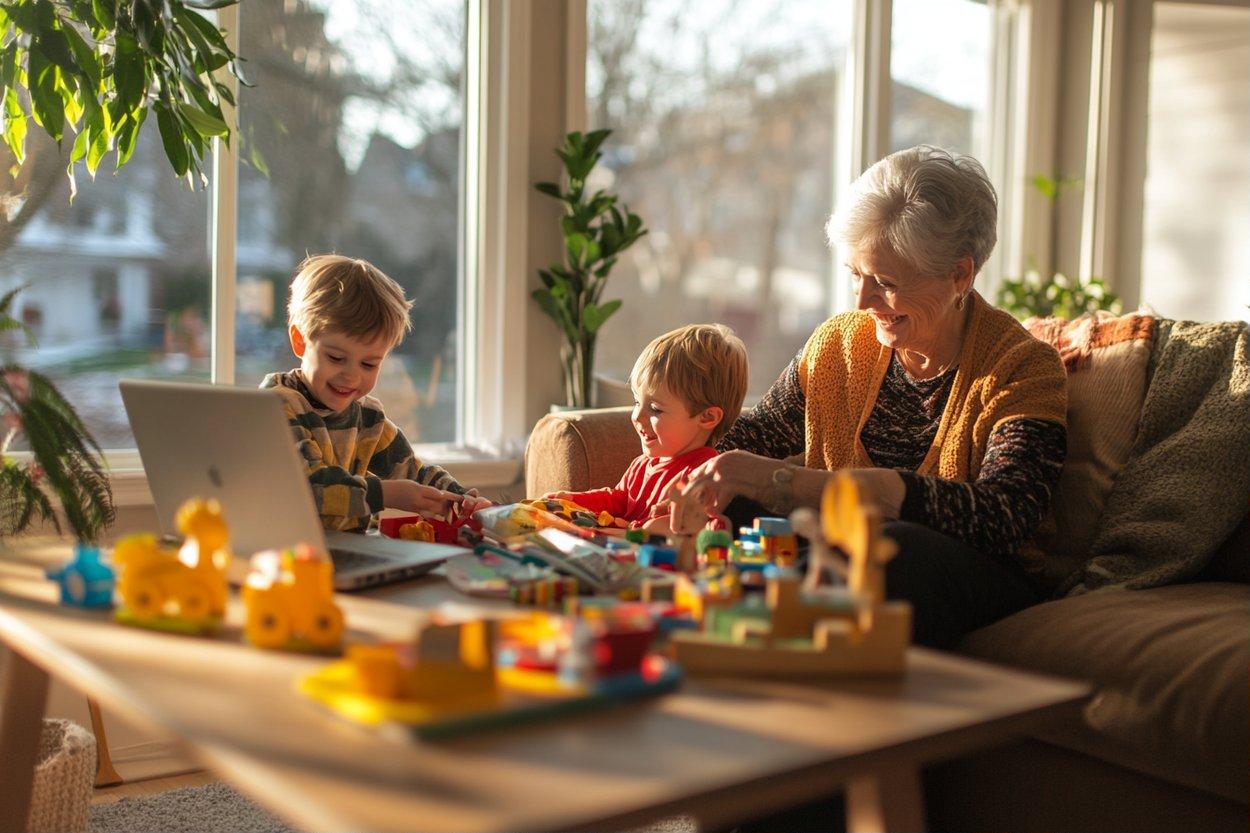The Quiet Resurgence of Intergenerational Living
In an era of rapid social change, a subtle yet profound shift is occurring within American households. Intergenerational living, once a necessity born of economic hardship, is experiencing a renaissance. This time, it's driven by choice rather than circumstance. Read below to explore how this age-old living arrangement is finding new relevance in modern society.

Historical Context and Cultural Shifts
Intergenerational living has deep roots in many cultures, including those of immigrant communities in the United States. For decades, it was common for grandparents, parents, and children to share living spaces, pooling resources and providing mutual support. However, the post-World War II era saw a shift towards nuclear family units, driven by economic prosperity, suburbanization, and changing social norms.
The pendulum began to swing back during the 2008 financial crisis, as economic necessity forced many families to combine households. What started as a temporary solution for many has evolved into a deliberate lifestyle choice for an increasing number of Americans. This shift reflects broader societal changes, including delayed marriage, longer lifespans, and a growing emphasis on family connections in an increasingly digital world.
The Modern Face of Intergenerational Living
Today’s intergenerational households look markedly different from their historical counterparts. They’re often characterized by purpose-built or renovated spaces that allow for both privacy and interaction. Multigenerational homes now feature separate entrances, kitchenettes, and living areas that cater to the needs of different age groups while maintaining a sense of cohesion.
This new approach to shared living spaces reflects a desire for independence within a supportive family structure. It’s not uncommon to find adult children living with parents by choice, contributing financially and socially to the household. Similarly, aging parents are increasingly moving in with their adult children, providing childcare and domestic support while receiving care and companionship in return.
Economic Factors and Housing Market Dynamics
The economic benefits of intergenerational living are significant and multifaceted. In major urban areas where housing costs have skyrocketed, combining resources allows families to afford homes in desirable neighborhoods that might otherwise be out of reach. This arrangement can also facilitate wealth accumulation, as multiple generations contribute to mortgage payments and home equity.
For younger adults burdened by student debt and facing a competitive job market, living with family can provide a financial buffer, allowing them to save for future goals or invest in further education. Older adults, meanwhile, can age in place with built-in support systems, potentially delaying or avoiding costly assisted living arrangements.
Social and Emotional Benefits
Beyond the economic advantages, intergenerational living offers profound social and emotional benefits. It creates opportunities for grandparents to form close bonds with grandchildren, passing down family histories, traditions, and life skills. For working parents, having grandparents or other family members available for childcare can reduce stress and provide children with a rich, nurturing environment.
Older adults living with family often report lower rates of loneliness and depression, as well as improved overall health outcomes. The daily interactions and sense of purpose that come from being an integral part of a household can have significant positive impacts on mental and physical well-being.
Challenges and Adaptations
While the benefits are numerous, intergenerational living is not without its challenges. Privacy concerns, differing lifestyles, and potential conflicts over household responsibilities can create tension. Successful multigenerational households often require clear communication, established boundaries, and a willingness to compromise.
Architects and home designers are responding to this trend by creating flexible living spaces that can adapt to changing family needs over time. Features like soundproofing between floors, multiple master suites, and shared common areas are becoming more common in new construction and renovations aimed at multigenerational families.
Implications for Society and Policy
The rise of intergenerational living has broader implications for society and public policy. It challenges traditional models of urban planning and zoning, which often favor single-family homes or apartments designed for nuclear families. As this trend grows, there may be increased pressure on local governments to adjust zoning laws to accommodate multigenerational households.
This shift also intersects with ongoing discussions about healthcare and elder care. With more families providing care for aging relatives at home, there’s a growing need for support services and resources tailored to caregivers. Policymakers may need to consider how to better support families engaged in intergenerational caregiving, potentially through tax incentives, respite care programs, or enhanced home health services.
The resurgence of intergenerational living represents a significant shift in how Americans conceptualize family and home. It’s a trend that speaks to our evolving values, economic realities, and desire for meaningful connections in an often fragmented world. As this movement continues to grow, it has the potential to reshape communities, influence housing markets, and redefine the very fabric of American society. The quiet revolution of intergenerational living is not just about sharing space; it’s about reimagining the possibilities of family life in the modern era.





